After a long (and early) summer hibernation period where we hardly went on any trips, we ended up deciding to take advantage of the generous Eid Al Fitr holidays and head up to Salalah to experience Khareef Salalah “خريف صلالة” and check out some of the many attractions in THE tourist hotspot of Oman (at this time of the year anyway!).
Salalah (صـلالـة) is the capital city of the governorate of Dhofar in the South of Oman, and the second largest city in the country. Salalah is one of probably only two places in the Arabic peninsula (besides Yemen) that experiences a monsoon season, which is called Khareef and lasts from July to September. Khareef means “autumn” in Arabic but it refers to monsoon when describing Salalah, and by the way the word monsoon in English is derived from the Arabic word maowsim “موسم” which means season. During this time, the brown landscape of Salalah and its surroundings is completely transformed to a beautiful and lush green, and locals and tourists alike flock to Salalah.
Not surprisingly, the city and surrounding areas get really busy at this time of the year, especially considering that the Salalah Tourism Festival starts at the same time; visitors may find it difficult or extremely expensive to get a room or even hire a car unless they booked well in advance, and our top tip is to always book in advance and ensure you get your booking confirmed prior to your departure to avoid any nasty surprises!
Khareef is not the only thing Salalah is known for, Salalah is even more famous for its ancient frankincense trade, with the UNESCO including several ancient settlements (Al Balid, Sumharam, Shisr and Wadi Dawkah) in Dhofar in its World Heritage List, appropriately naming it the “Land of Frankincense”. Thousands of years later, Salalah is still well known for the quality and quantity of frankincense it produces!
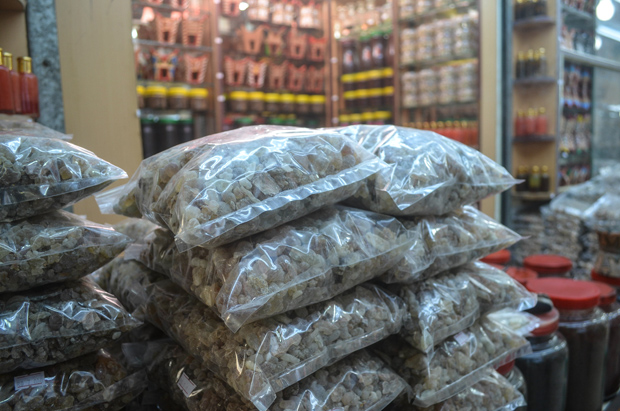
Things to Do / Places to Visit:
We spent two nights in Salalah, and managed to visit the following places:
Souq Al Haffa سـوق الـحافـة
This is the main market in Salalah and the place for buying traditional Omani items from clothing to gold and silver handicrafts, and of course a wide variety of frankincense! If you are here during the Salalah Tourism Festival you may also see a traditional Dhofari dancing performance.
Al Balid Archaeological Park / Frankincense Museum مـديـنـة الـبـلـيـد الأثـريـة\ مـتـحـف الـلـبـان
This is the location of the ruins of Al Balid, an ancient city known as a frankincense trading hub and visited by both Marco Polo and Ibn Batuta. The area has been developed with footpaths to the ruins and information throughout, making it a very pleasant and educational trip for all family members. A khor (“خور” a ravine in Arabic) also passes through the area adding to the charm. Entrance fee is 2 R.O per passenger car, this also includes the entrance fee to the Frankincense Museum which is located on the park complex. The museum displays various artifacts discovered in Al Balid and Sumharam ruins, as well as a whole section covering Omani maritime history including beautiful models of Omani ships past and present. We found the displays and presentation at the museum to be one of the best we have seen in Oman so far, and we highly recommend it for anyone visiting Salalah!
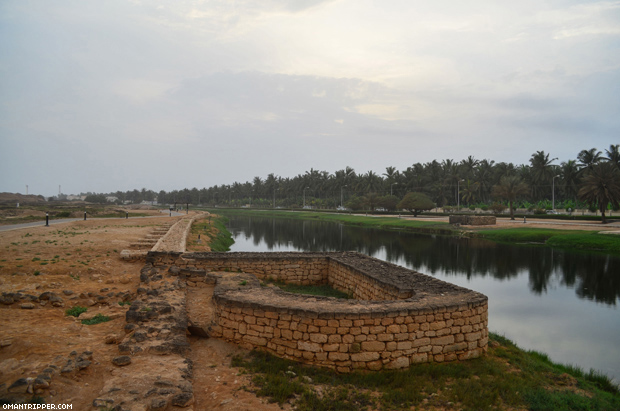
Sultan Qaboos Mosque Salalah جـامـع الـسـلـطـان قـابوس
A splendid mosque right in the heart of the city, and the largest in Salalah. It is has a single dome structure flanked by two minarets, with beautiful Arabic calligraphy inscriptions inside. The architecture of the mosque is very similar to Sultan Taimur Bin Faisal Mosque in Muscat. The mosque can be visited weekdays between 8 to 11 am.
Aqeel Mosque مـسـجـد عـقـيـل
Originally built in 1779, making it one of the oldest mosques in Salalah still in use today. The mosque has a very unique design inspired from Andalusian architecture, and is the only one of its kind in Oman.
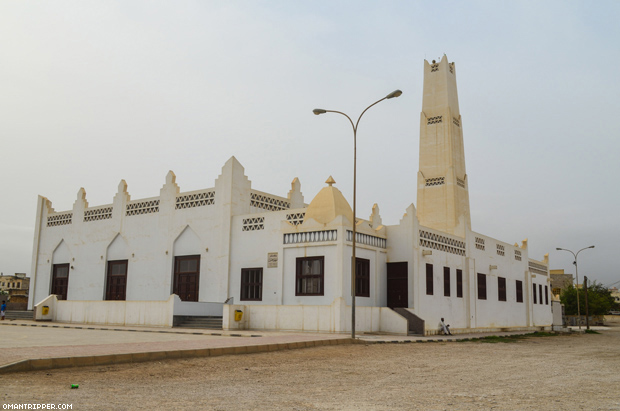
Ittin Plain سـهـل إتـيـن
A flat area close to the the city center, with lots of food “stalls” selling Dhofari food delicacies (yay for Camel mushkak!) and popular with people wanting to camp and enjoy some fresh air. We did not get to explore the area further, but apparently there are beautiful viewpoints if you drive up the hills beyond the plain.
Al Mughsail Beach شـاطـيء مـغـسـيـل
About 40 kms from the city and one of the top attractions in Salalah. The beaches in Salalah and surrounding coastline are very rough and Mughsail is no exception, where it is unique is that the waves crash through naturally formed blowholes in the limestone formations and spurt up water plumes with a thundering noise up to several meters in the air! If you are brave enough you should take a picture right next to the water jet spurting through the blowholes (but you will most likely get completely wet :)). There is also a coffee shop in Mughsail beach along with viewing platforms with spectacular views of the beautiful and rugged coastline. Make sure you get here early before the crowds especially if you want to have good photo opportunities, we got there around 7 am and it was perfect!
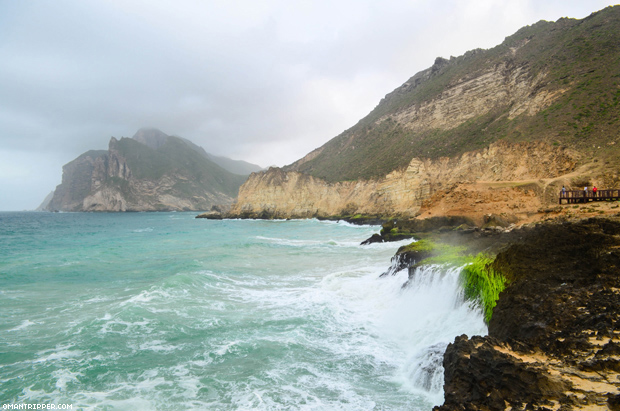
Al Fazayeh Beach شـاطـيء الـفـزايـح
An isolated beach about 30km west of Mughsail, with an amazing coastline. If you liked Mughsail but did not like how crowded it got, head out here for a more natural and (as of yet) non-exploited beach. The drive is quite beautiful during khareef as it goes through the green mountains, but it is single lane and quite windy so drivers should be extra careful. If you continue further west towards Dhalkoot, you will be going through more beautiful scenery and closer to the Yemeni boarder.
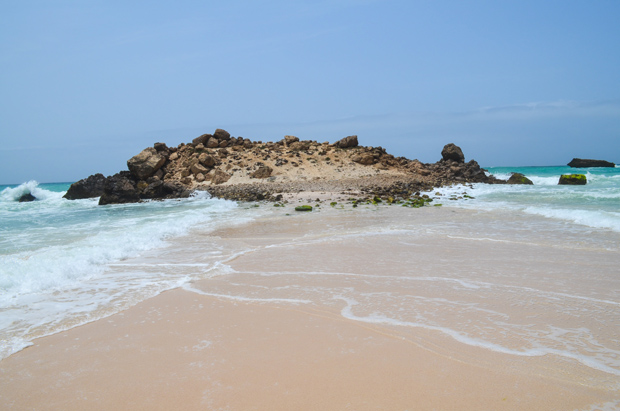
Sumharam Archaeological Site / Khour Rori مـديـنـة سـمـهـرم الأثـريـة \ خـور روري
An impressive ruins of the ancient port city of Sumhuram which has been dated back to the 1st century AD. The city was an important frankincense trading hub in ancient times due to its strategic location. The site is a couple of kilometres from Taqah, which itself is about 40 kms from Salalah. A visitor fee of RO 2 per passenger car gets you access to the ruins of the fortified city, entrance to the museum and a chance to go close to Khour Rori where sea water mixes with sweet water from Wadi Dirbat at high tide.
One of the few forts/castles in Dhofar, the castle was built in the 19th century as a residence for a local tribal leader. There is lots of information about the various rooms and exhibits in castle, and we quite enjoyed our visit here especially with a very informative castle officer who gave us a personal tour. A watch tower located on a hill behind the castle is part of the complex but was built at a much later date, and is not open for visitors. Taqah Castle is in Taqah and the entrance fee is RO 0.5 per person.
Wadi Dirbat وادي دربـات
A beautiful natural park which is completely covered with lush green vegetation during khareef season. With a beautiful lake, occasional waterfalls and mountains obscured with fog, Wadi Dirbat offers a wonderful and enchanting experience that makes you wonder if you really are in Oman! There are lots of stalls in the wadi selling fresh fruits and mosquito repellent (which is a must!), and you can also get a boat to paddle in the lake! The turn to Wadi Dirbat is a couple of kilometers from Taqah, and a winding road takes you to the park.
Places To Stay in Salalah:
There are many accommodation options in Salalah ranging from 5 star hotels to furnished flats and apartments, but not many low budget accommodation options. You can find and book most of these hotels online, and Oman Tourism website has information on many of these hotels. However, it is hard to find information online for available apartments so if that is where you want to stay you can either get an Arabic speaking friend to find the information through discussion forums, or try to get the Oman Tourism booklet which has a list of apartment complexes and their phone numbers. It is important to book accommodation in advance if you are coming to visit Salalah during the khareef seasons as Salalah becomes extremely packed with tourists.
As for camping, we did not really explore many options but the beaches further west from Mughsail is probably your best option, we would not even consider camping on the mountains due to the mosquitoes! Be warned that there are lots of stray camels in Salalah, and hyenas may occasionally be spotted!
Going to Salalah:
You can either fly or drive to Salalah. Oman Air operates several flights a day during khareef season. Unless you are going in a large car convoy or love driving 1,000+ km across the desert, flying is probably your best option!
There are many more places to visit in and around Salalah, which we could in no way cover over a 2 day trip, including almost half a dozen natural springs and other attractions. If you have a free time during the khareef season, you will surely not regret making a trip to Salalah…as long as you have mosquito repellent 
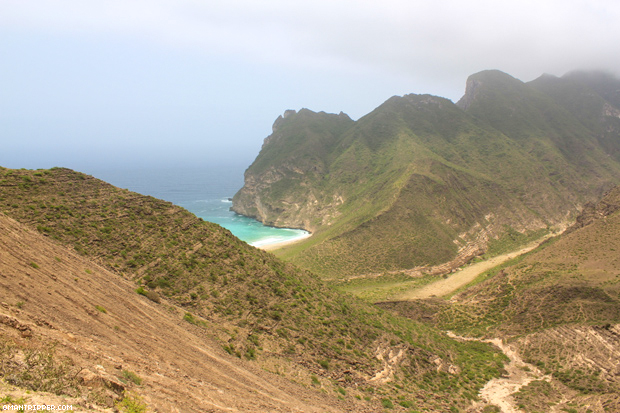
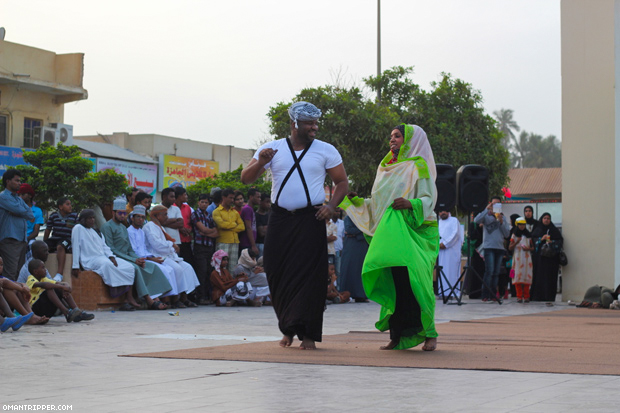
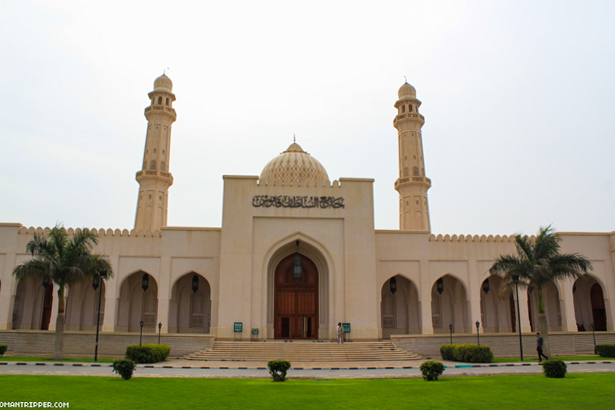
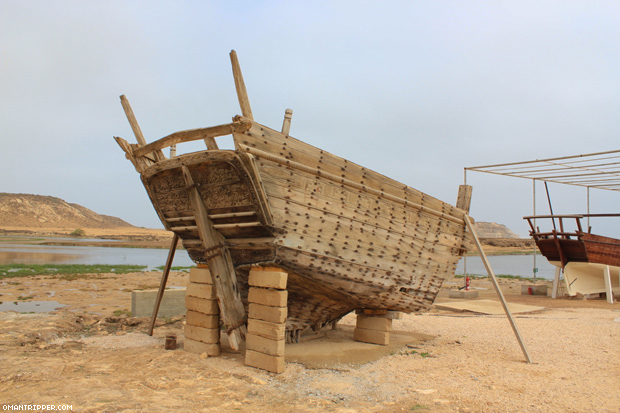
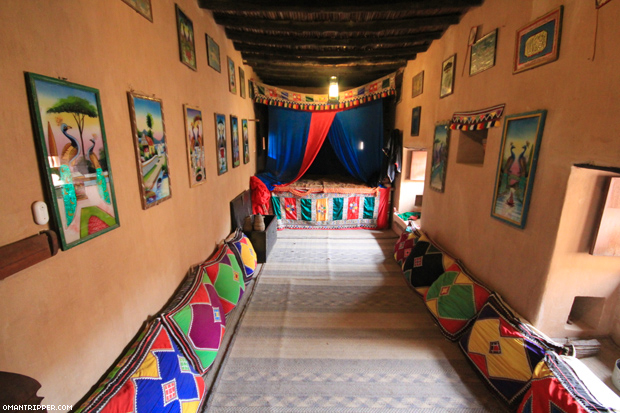
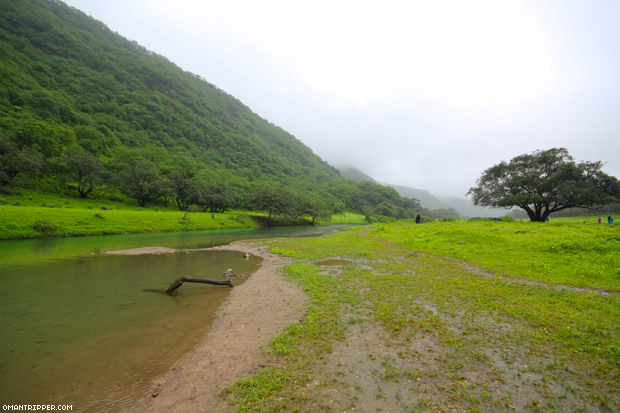
No comments:
Post a Comment